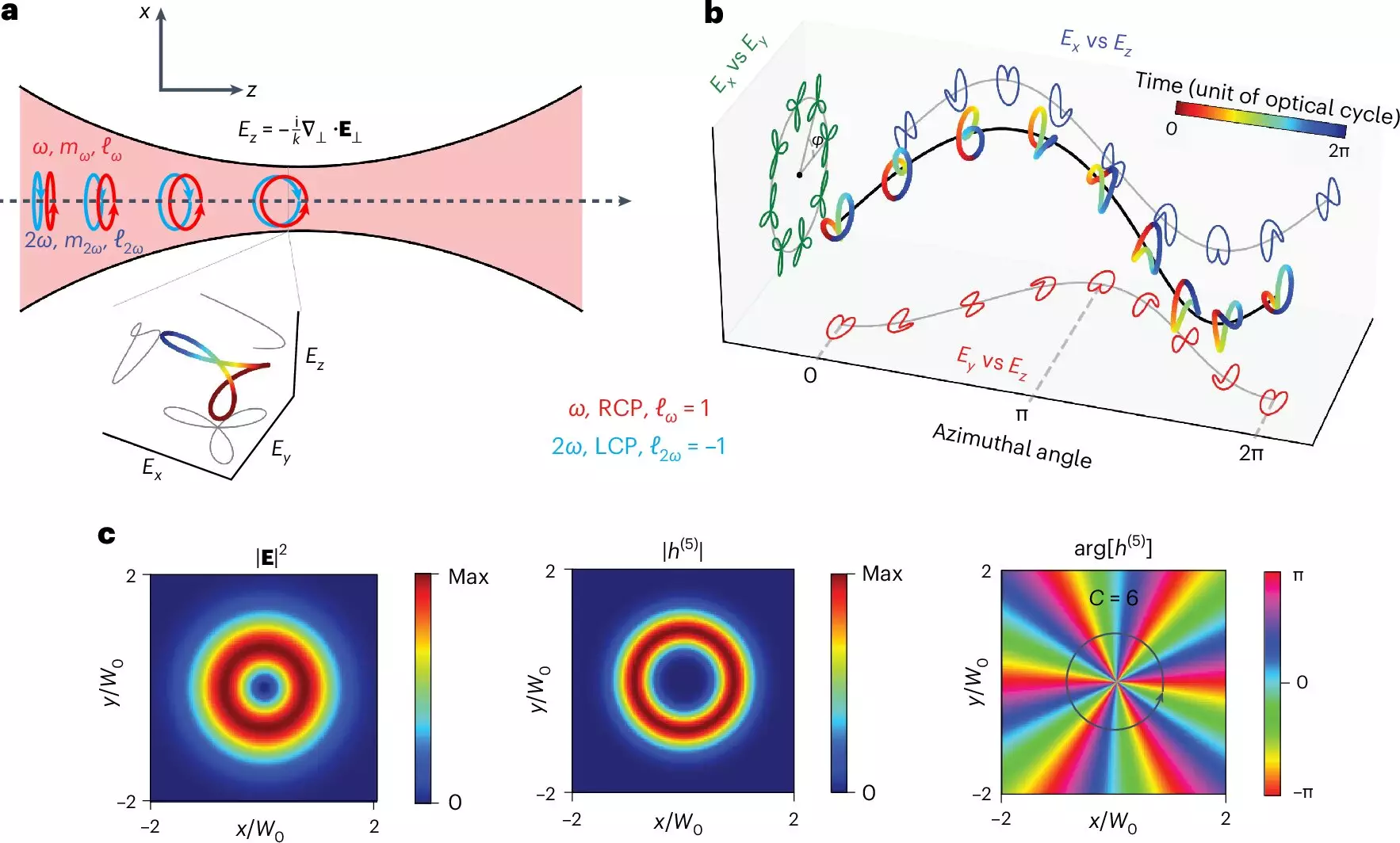Chirality, a cornerstone principle in chemistry and biology, refers to the asymmetrical property of certain molecules. Much like human hands, these molecules possess mirror-image counterparts—right-handed and left-handed varieties—that often exhibit significantly different biological effects. As our understanding of chirality has evolved, so too have the methods for measuring it. A pivotal breakthrough in this domain has emerged from a collaborative effort between researchers at King’s College London and the Max Born Institute in Germany. Their recent publication in *Nature Photonics* introduces a novel structure of light known as a “chiral vortex,” which promises to enhance the accuracy and robustness of chirality detection in molecules.
Traditional optical methods of chirality measurement have often struggled with limitations, particularly the necessity of large sample sizes to ascertain the handedness of molecules. This inadequacy has led to a pressing need for innovative solutions that can operate effectively even with minimal quantities of substance. The introduction of the chiral vortex is a significant advancement in this area. This unique structure of light exhibits a spatially varying handedness, effectively creating a dynamic chiral curve as it propagates. When chiral particles interact with this vortex, they emit photons in a distinctive pattern through high-harmonic generation—a process that recently garnered attention in the realm of theoretical physics.
Dr. Nicola Mayer, a leading researcher on the study, emphasized that one of the primary advantages of the chiral vortex lies in its ability to detect even minute discrepancies between right-handed and left-handed molecules. For instance, when assessing a mixture composed of 49% right-handed and 51% left-handed molecules, this revolutionary technique can accurately identify the slight excess, a crucial capability when considering the real-world implications of drugs like thalidomide.
The pharmaceutical landscape has historically been fraught with peril linked to chirality. The infamous case of thalidomide, a drug introduced in the 1950s that was later found to cause severe birth defects due to its right-handed formulation, stands as a grave reminder of the importance of chirality detection in drug development. By employing innovative technologies such as the chiral vortex, researchers can potentially avert such tragedies in the future. This precision offers the pharmaceutical industry a promising avenue for ensuring that medications are both effective and safe—crucial factors when developing treatments for sensitive populations such as pregnant women.
Moreover, the robust signal generated by the interaction between chiral molecules and the chiral vortex addresses a fundamental challenge in chirality experiments: the vulnerability of optical signals to fluctuations in light intensity. This enhancement encourages wider accessibility to chiral measurements and opens doors for further exploration in both academic and industrial settings.
Beyond the immediate implications for pharmaceutical safety, the enhanced detection of chirality has potential ramifications that extend into fundamental chemistry and biology. The ability to discern the handedness of molecules with such precision allows scientists to glean insights into the fundamental behaviors of electrons within those molecules. Understanding electron dynamics at their natural speeds paves the way for future innovations in chemistry that could manipulate reactions with unprecedented finesse.
In addition, this research hints at exciting possibilities in the realm of quantum computing. The notion that chirality could be imprinted on quantum bits, thus amplifying their data processing capabilities, presents a frontier ripe for exploration. This intersection of quantum mechanics and molecular chirality might lead to revolutionary advances in computational power and efficiency.
Concluding Thoughts
The introduction of the chiral vortex represents a groundbreaking advancement in the measurement of chirality, promising to transform various fields from pharmaceutical development to quantum computing. As researchers continue to refine this method, we can anticipate not only enhanced safety in drug formulations but also a newfound understanding of molecular interactions on a fundamental level. Such advancements continue to underscore the importance of interdisciplinary research, where innovative ideas flourish and pave the way for new technologies. The journey of unraveling the complexities of chirality is far from over, and the chiral vortex may well be the key to revolutionizing our approach to measuring one of chemistry’s most vital properties.


Leave a Reply